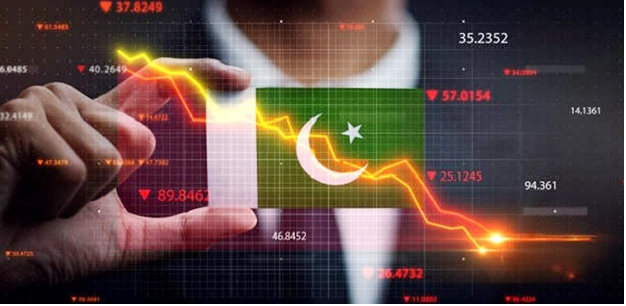آئی این پی ویلتھ پی کے
Moaaz Manzoor
Amid cautious optimism presented by the Ministry of Finance in its April economic update, Pakistan’s broader economic stabilisation continues to be weighed down by persistent manufacturing struggles, particularly in the large-scale manufacturing (LSM) sector.

The ministry cited improved macroeconomic indicators — such as a stable exchange rate, record-high non-tax revenue collections, and manageable inflation — as signs of emerging stability. Yet this fiscal prudence appears to be coming at the cost of industrial recovery, with LSM contracting by 1.9% in the first eight months of FY25, compared to a milder 0.4% dip in the same period last year.
The situation worsened in February, when LSM output fell 5.9% month-on-month and 3.5% year-on-year, deepening concerns over real sector stagnation. Despite recent monetary easing, manufacturing has failed to show a meaningful turnaround. Speaking to WealthPK, Syed Immaduddin Hussaini, researcher and economist at the Federation of Pakistan Chambers of Commerce & Industry (FPCCI), noted, “Even with a steep 1,100 basis point cut in the policy rate since June 2024, industrial output remains subdued.
This suggests that monetary accommodation alone is inadequate to revive manufacturing, which continues to face structural bottlenecks and muted demand.” Hussaini added that rising remittances, though supportive of the external account, had not yet translated into tangible investment or consumption gains in the domestic industrial landscape. April’s consumer price index (CPI) recorded a year-on-year increase of just 0.3%, indicating ample room for more aggressive monetary easing.
“A deeper cut of around 300 basis points may have been more appropriate to support demand-side recovery, but the SBP’s modest 100 basis point reduction reflects a wait-and-see approach amid IMF considerations and global volatility,” he said. The Ministry of Finance anticipates further improvements in agriculture due to better weather and water availability, but challenges persist.
According to Mohammad Bilal Ejaz, research analyst at Ismail Iqbal Securities, the government's full-year GDP growth projection of 2.5% to 3.5% is under pressure. “Real GDP grew just 1.5% in the first half of FY25, with agriculture contributing 0.9%, services 2.4%, and LSM dragging growth down by 1.4%,” he pointed out. He attributed the slowdown in agriculture to lower farm incomes after the rollback of crop support price regimes, contrasting to the prior year’s 7% growth.
“When you combine the weakening output in agriculture with tight fiscal and monetary conditions and structural barriers like low productivity and inadequate investment, the path to economic revival becomes narrow,” Ejaz said. While fiscal discipline has supported a narrower fiscal deficit (2.2% of GDP) and a stronger primary surplus (3%), these gains may prove fragile if industrial output continues to falter. Policymakers now face the conundrum of enabling growth without reigniting inflation or worsening the current account balance.
Both the experts agree that without complementary fiscal incentives, investment promotion, and improvements in business confidence, the benefits of stabilisation may not fully materialise. Therefore, a more holistic approach integrating fiscal support, infrastructure investment, and industrial policy is essential. Without it, economic stabilisation may remain superficial and unsustainable in the medium-term.
Credit: INP-WealthPk


